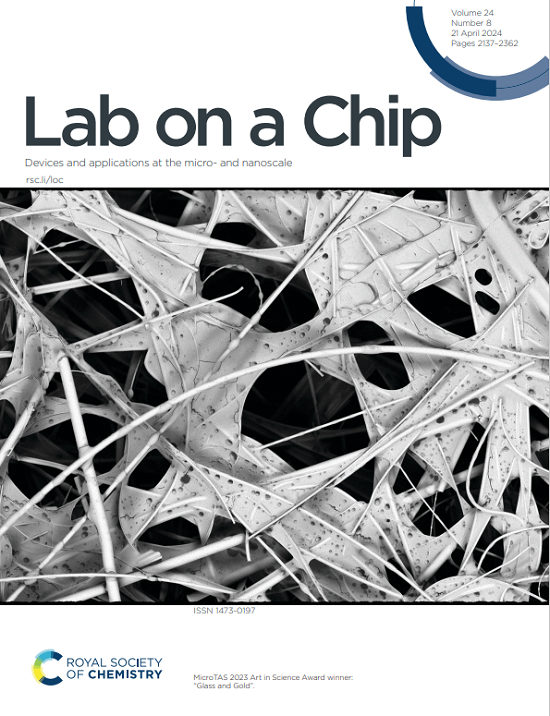Multiplexed detection of respiratory viral pathogens by isothermal amplification on an autonomously loaded chip at the point-of-care
IF 5.4
2区 工程技术
Q1 BIOCHEMICAL RESEARCH METHODS
引用次数: 0
Abstract
Recent viral outbreaks have shown the need for reliable diagnostic platforms to rapidly detect various viral and bacterial pathogens at the point-of-care. Over the last decade, isothermal nucleic acid amplification methods have emerged as an appealing alternative to standardized polymerase chain reaction (PCR) tests due to their high sensitivity, selectivity,low cost, and simple assay setup. Virtually, all the nucleic acid testing platforms require a labor-intensive sample preparation step, limiting the scalability and usability of recent alternatives. This article describes multiplexed isothermal detection of respiratory viruses on a valve-free, autonomously loading microfluidic platform—VirChip. We demonstrate that an optimized loop-mediated isothermal amplification (LAMP) enables the simultaneous detection of SARS-CoV-2, Influenza A, Influenza B, and RSV (A/B) with a limit of detection of 100 RNA copies per reaction. The platform is highly selective, as no cross-reactivity amongst the targeted pathogens was observed in patient samples. Furthermore, crude nasal swab samples can be directly applied to the chip, eliminating the requirement for expensive and laborious RNA isolation and sample workup. VirChip facilitates rapid, inexpensive, and multiplexed detection, allowing pathogen screening by primary care providers not only in hospitals but also in resource-limited areas.多路检测呼吸道病毒病原体的等温扩增在一个自主加载芯片在护理点
最近的病毒爆发表明,需要可靠的诊断平台,以便在护理点快速检测各种病毒和细菌病原体。在过去的十年中,由于其高灵敏度、选择性、低成本和简单的分析设置,等温核酸扩增方法已经成为标准化聚合酶链反应(PCR)测试的一种有吸引力的替代方法。实际上,所有的核酸检测平台都需要一个劳动密集型的样品制备步骤,限制了最近替代方案的可扩展性和可用性。本文描述了在无阀、自动加载的微流控平台virchip上进行呼吸道病毒的多路等温检测。我们证明了优化的环介导等温扩增(LAMP)能够同时检测SARS-CoV-2、甲型流感、乙型流感和RSV (A/B),每次反应的检测限为100个RNA拷贝。该平台具有高度选择性,因为在患者样本中没有观察到目标病原体之间的交叉反应。此外,粗糙的鼻拭子样品可以直接应用于芯片,消除了昂贵而费力的RNA分离和样品检测的需要。VirChip促进快速、廉价和多路检测,使初级保健提供者不仅可以在医院而且可以在资源有限的地区进行病原体筛查。
本文章由计算机程序翻译,如有差异,请以英文原文为准。
求助全文
约1分钟内获得全文
求助全文
来源期刊

Lab on a Chip
工程技术-化学综合
CiteScore
11.10
自引率
8.20%
发文量
434
审稿时长
2.6 months
期刊介绍:
Lab on a Chip is the premiere journal that publishes cutting-edge research in the field of miniaturization. By their very nature, microfluidic/nanofluidic/miniaturized systems are at the intersection of disciplines, spanning fundamental research to high-end application, which is reflected by the broad readership of the journal. Lab on a Chip publishes two types of papers on original research: full-length research papers and communications. Papers should demonstrate innovations, which can come from technical advancements or applications addressing pressing needs in globally important areas. The journal also publishes Comments, Reviews, and Perspectives.
 求助内容:
求助内容: 应助结果提醒方式:
应助结果提醒方式:


